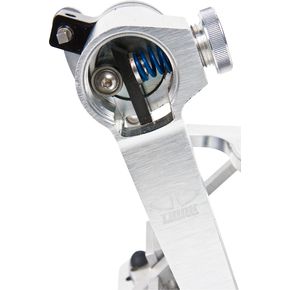Les Ismore
Platinum Member
Very Creative. I see a lot of very creative designs like this that work very well for the creator but don't translate well into the broad market. I've seen other players sit on a bass drum or cajon and play a normal pedal backwards with the heel, but never anything like this. Good Luck with it, though I don't feel a lot of players will change their style to adapt...
I hope that helps...
Lucas
OK... lets clear something up first, are you a real doctor, or are you just playing one here on DRUMMERWORLD?
This design makes sense from an anatomical standpoint b/c the player is stabilized by a planted foot, as opposed to a floating foot. The heel is the more efficient driver also, has more power.
This 'style' may be so natural a motion, there might be nothing to adapt to.





